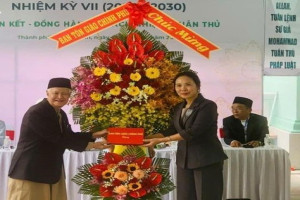
Hue city is preparing to seek UNESCO’s world heritage recognition for nine dings of the Nguyen Dynasty, Vietnam's last royal rulers.
Ding is a kind of ancient Chinese cauldrons that stand upon legs with two facing handles.
The nine dings placed inside The Mieu Temple are all cast in bronze. They date back to a three-year 1835-1837 period under the reign of King Minh Mang. Each one, about two meters tall and weighing up to 2,600 kg, commemorate an emperor of the Nguyen Dynasty, which ruled from 1802 to 1945.
Võ Lê Nhật, director of the Center for Conservation of Hue Monuments, which manages the Hue Imperial Citadel and other relics from the Nguyen Dynasty, said they were completing documents on the nine dings. These will be sent to the Ministry of Culture, Sports and Tourism for submission to UNESCO.
The central one, the largest of the nine, commemorates Gia Long, the dynasty’s first emperor.
The nine dings were recognized as national treasures in 2012.
Located southwest of the UNESCO-protected Hue Imperial Citadel, The Mieu Temple was built in 1822 for the purpose of worshipping the Nguyen Dynasty rulers.
Hue, the seat of the dynasty, is home to royal tombs, ancient palaces and pagodas that attract millions of foreign visitors every year.
It is the capital of Thua Thien-Hue Province, which has five world heritages: Hue's Complex of Monuments, the town’s nha nhac or royal court music, Nguyen Dynasty woodblocks, Nguyen Dynasty documents, and literature on Hue royal architecture.




